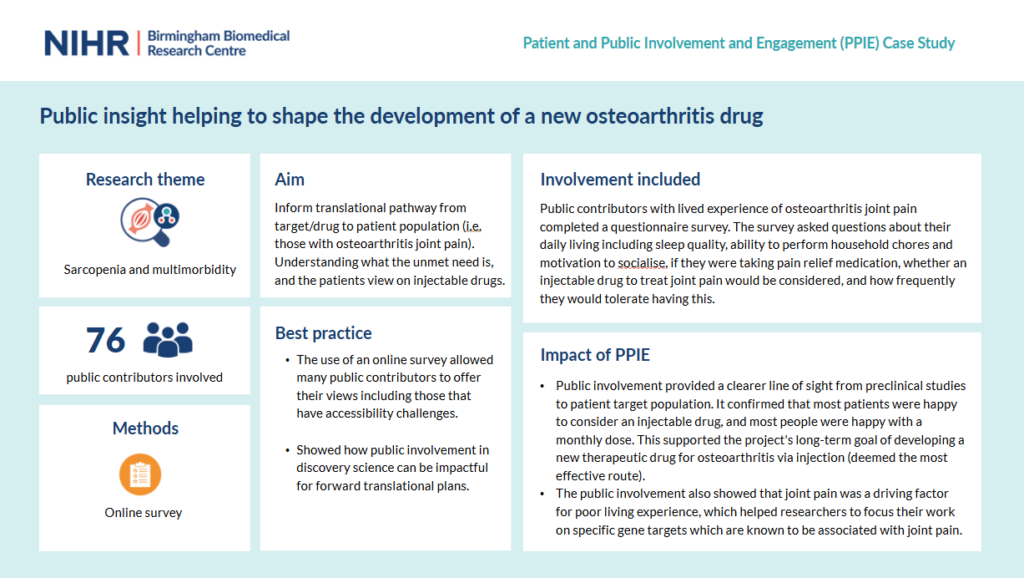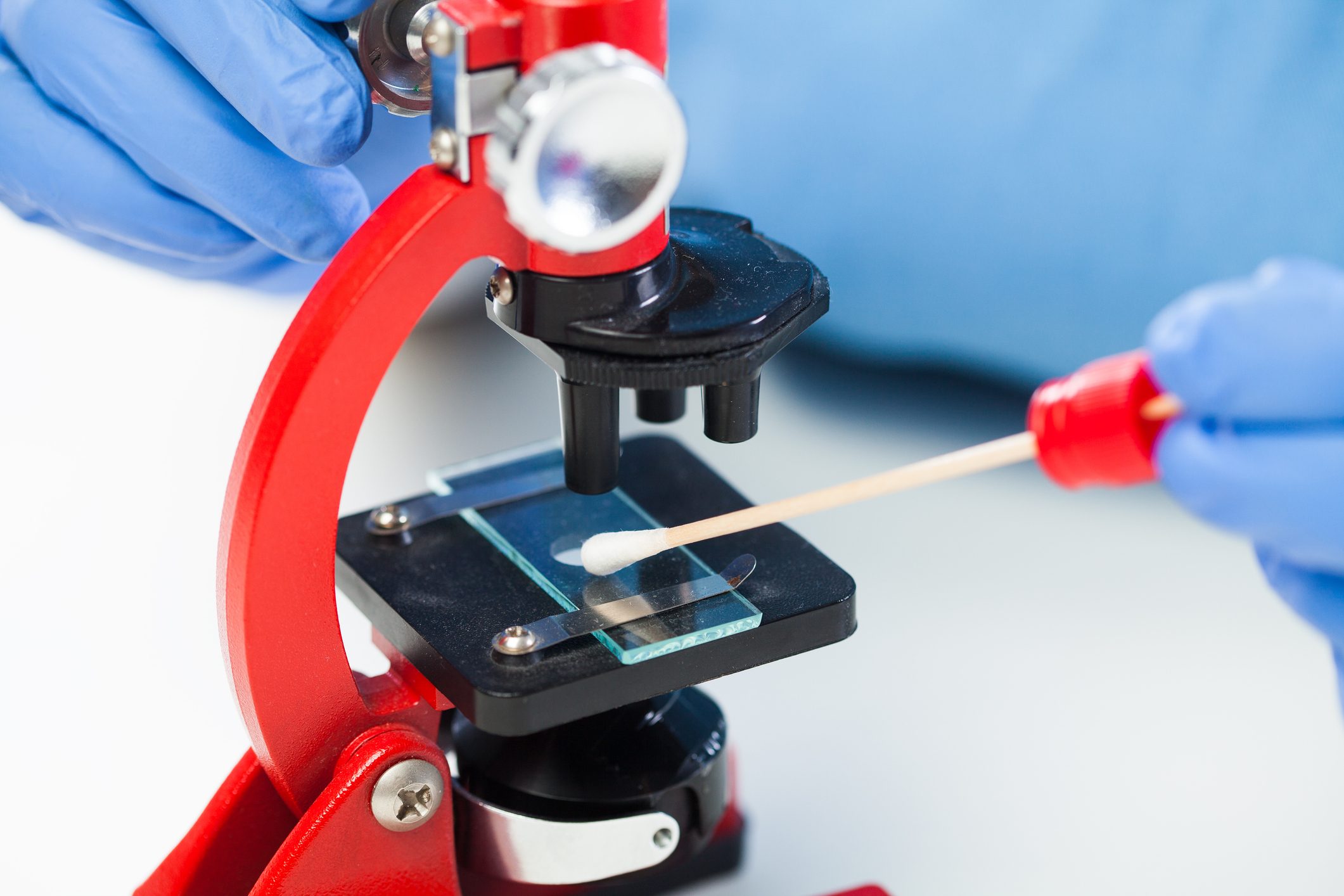Public insight helping to shape the development of a new osteoarthritis drug

Research theme
People involved
Sarcopenia and Multimorbidity Theme Lead
Patient and Public Involvement and Engagement (PPIE) Case Study
Aim
- Inform translational pathway from target/drug to patient population (i.e. those with osteoarthritis joint pain)
- Understanding what the unmet need is, and the patients view on injectable drugs
Methods
We used an online survey to interact with the 76 public contributors involved.
Involvement included
Public contributors with lived experience of osteoarthritis joint pain completed a questionnaire survey. The survey asked questions about their daily living including sleep quality, ability to perform household chores and motivation to socialise, if they were taking pain relief medication, whether an injectable drug to treat joint pain would be considered, and how frequently they would tolerate having this.
Best practice
- The use of an online survey allowed many public contributors to offer their views including those that have accessibility challenges.
- Showed how public involvement in discovery science can be impactful for forward translational plans.
Impact of PPIE
- Public involvement provided a clearer line of sight from preclinical studies to patient target population. It confirmed that most patients were happy to consider an injectable drug, and most people were happy with a monthly dose. This supported the project’s long-term goal of developing a new therapeutic drug for osteoarthritis via injection (deemed the most effective route).
- The public involvement also showed that joint pain was a driving factor for poor living experience, which helped researchers to focus their work on specific gene targets which are known to be associated with joint pain.

Latest case studies

Public insight helping to shape the development…
Patient and Public Involvement and Engagement (PPIE) Case Study Aim Inform translational pathway from target/drug…

Ultrasound analysis detection of sarcopenia
Despite its common occurrence and impact on patients, sarcopenia (a muscle wasting syndrome) is not…

Home-based intervention to reduce sarcopenia
It is already well established in age-related sarcopenia (a muscle wasting syndrome) that resistance exercise…



